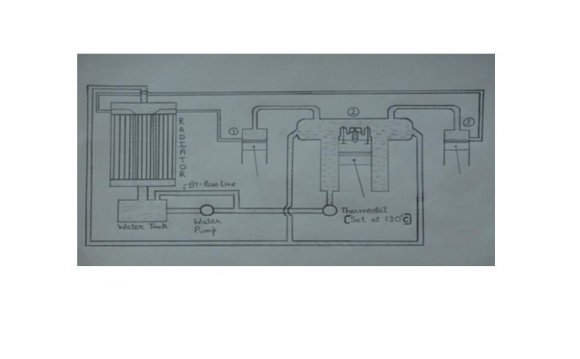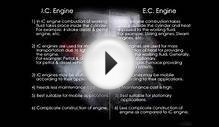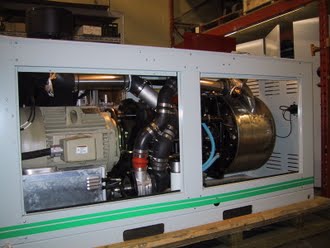
It is a known fact that the two basic engine types, internal combustion engine and external combustion engine are individually not very efficient, as neither of them has efficiency greater than 40%. This is because of the fact that when a fossil fuel burns, the energy is released in the form of heat and explosion but none of the above mentioned engines are able to utilize both these forms for producing useful output. Hence if the working of these two engines is integrated then there is a scope of producing an engine that is highly efficient & effective.
An important point to note is increasing the coolant temperature passing through cylinder block reduces the fuel consumption and hydrocarbon emissions and approximately 30% of the energy produced, by burning of fuel, is lost through the cooling system. Thus it becomes very important to trap this energy that goes wasted without doing any useful work.
As shown in the figure, the 3-cylinder inline engine is designed such that the 2nd cylinder-piston arrangement works like a primary source of power; as internal combustion cylinder-piston arrangement, whereas the 1st and 3rd cylinder-piston arrangements work like a secondary source of power; as external combustion cylinder-piston arrangement.
When fuel is combusted inside the sole IC cylinder, the energy released is used to produce motive power by the piston of IC cylinder-piston arrangement and the heat released, for which water circulation inside the water jackets is taking place, is utilized to propel the pistons of the two external combustion cylinders (cylinder 1 and 3).
This is made possible by changing the setting of thermostat from conventional 93°C to 130°C. As a result the water contained in the water jacket undergoes a ‘phase change’. This causes steam generation to take place at pressure of 2 bars. In order to ensure that steam generation takes place the flow rate of water delivered by the water pump is regulated such that water remains in contact with the wall of engine liner for relatively longer duration so that it can absorb maximum amount of generated heat and undergo phase change in addition of keeping the temperature within combustion chamber under prescribed level.
The generated steam is then diverted in the space above the pistons of the two EC cylinders where due to the characteristics of ‘vapor pressure’ applies force on the piston to move down.
After pushing the pistons, steam achieves a lower temperature & is exited through ports into a hose that delivers it to the radiator where it condenses to water droplets. Also that portion of water which does not undergo phase change is diverted through another set of hoses, back to the radiator for cooling.
The arrangement of the 3 pistons on the crankshaft is made in such a way that as the IC cylinder’s piston moves from TDC to BDC the two EC cylinder pistons move from BDC to TDC and vice versa. In this manner the EC cylinder- pistons support the IC cylinder piston.
Voting
Voting is closed!
ABOUT THE ENTRANT
Abhimanyu's favorite design and analysis tools:
Pro-Engineer Wildfire 5.0,
Pro-Mechanica Version 5.0,
Ansys
Abhimanyu's hobbies and activities:
Taking part in technical competitions, Reading defence reviews, Collecting stamps and giving radio talks related to the field of automobile engineering.
Abhimanyu belongs to these online communities:
SAE India, Linked-In
Abhimanyu is inspired by:
The increasing demand of producing efficient engines provides the motive for working in this direction.
RELATED VIDEO




 An engine or motor is a machine designed to convert energy into useful mechanical motion. Heat engines, including internal combustion engines and external combustion engines (such as steam engines) burn a fuel to create heat which is then used to create motion...
An engine or motor is a machine designed to convert energy into useful mechanical motion. Heat engines, including internal combustion engines and external combustion engines (such as steam engines) burn a fuel to create heat which is then used to create motion...
 A Stirling engine is a heat engine operating by cyclic compression and expansion of air or other gas, the working fluid, at different temperature levels such that there is a net conversion of heat energy to mechanical work.
A Stirling engine is a heat engine operating by cyclic compression and expansion of air or other gas, the working fluid, at different temperature levels such that there is a net conversion of heat energy to mechanical work.







